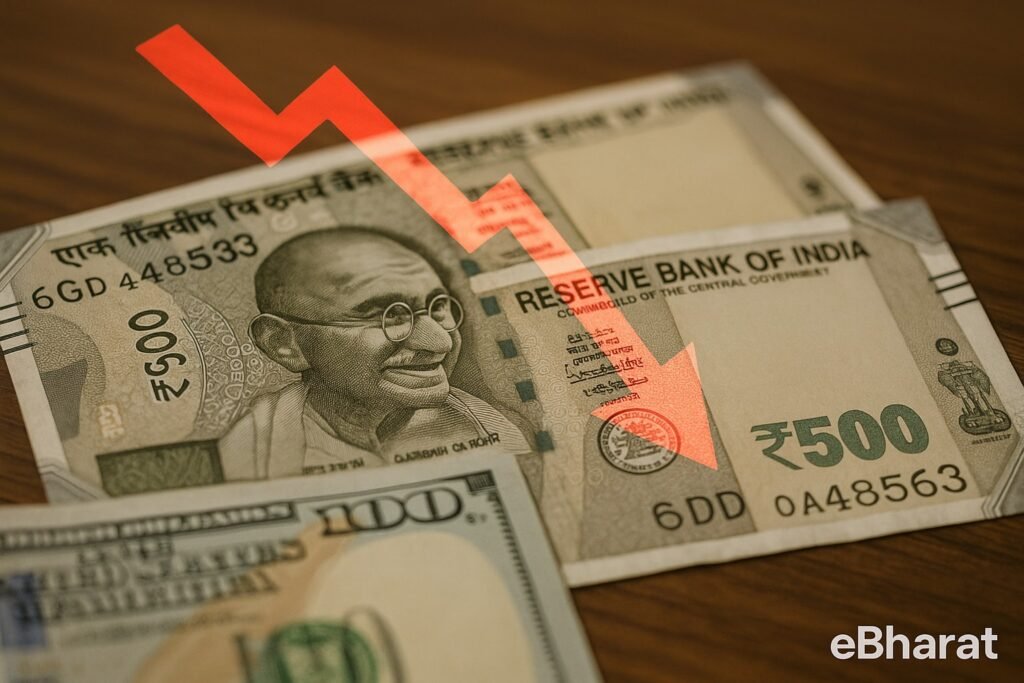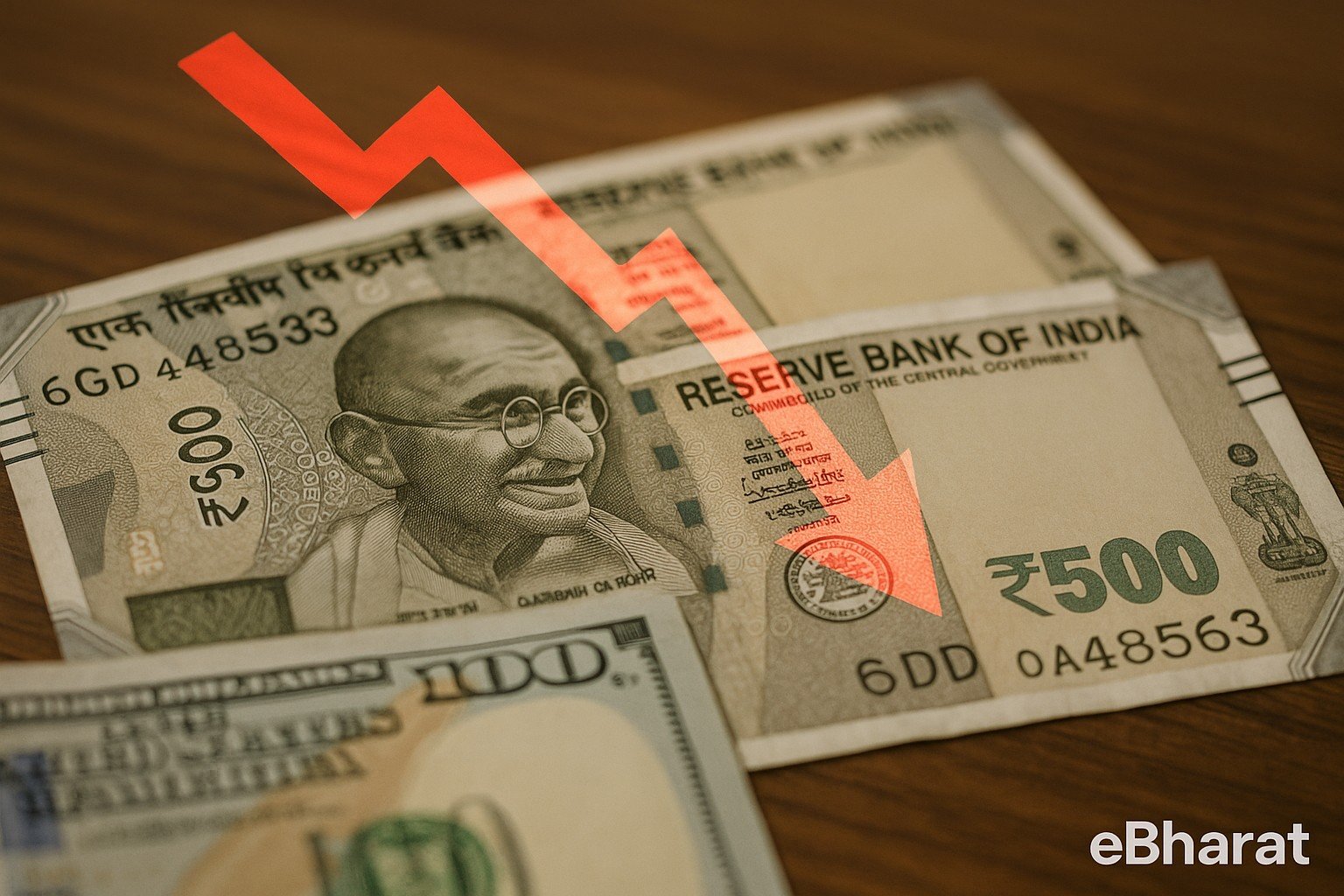
September 24, 2025 — The Indian rupee weakened to an unprecedented ₹88.7975 against the U.S. dollar on Wednesday, underscoring the mounting pressure from foreign outflows and global policy shocks. The record low comes at a time when investor confidence in emerging markets is being tested by a stronger dollar and uncertain global trade dynamics.
The sharp move was fueled by a combination of global and domestic factors. Overnight, the dollar gained strength after U.S. policymakers reiterated their focus on keeping rates elevated until inflation shows sustained cooling. That message rattled Asian currencies broadly, but the rupee bore a heavier brunt because of additional headwinds tied to U.S. visa and tariff policies. The recent hike in H-1B visa fees has unnerved India’s technology exporters, while higher tariffs on Indian goods are clouding the outlook for merchandise shipments. Together, these moves are raising concerns about the country’s external earnings and the strength of future inflows.
The Reserve Bank of India has stepped in through state-run banks to smooth volatility, but dealers say the interventions appear measured rather than aggressive. By not drawing a hard line at a specific level, the RBI seems willing to let the rupee find its range as long as the moves remain orderly. Market participants suggest that the central bank’s focus is on avoiding panic rather than defending a particular number.
For India’s economy, the consequences of this depreciation are mixed. Exporters, particularly in sectors such as textiles and pharmaceuticals, may gain short-term price competitiveness abroad. Yet importers of oil, technology equipment, and other dollar-denominated goods face rising costs, raising the risk of imported inflation. Companies with overseas borrowings also see their repayment burden swell. At a household level, the weaker rupee could translate into higher prices for fuel and electronics, adding to inflationary pressures.
Foreign portfolio investors have been steadily pulling out money from Indian equities in recent sessions, further straining sentiment. On Tuesday alone, outflows crossed ₹3,500 crore, highlighting the scale of caution among overseas funds. Analysts warn that unless global conditions ease or domestic inflows accelerate, the rupee could test fresh lows beyond the 89-per-dollar mark.
The new record is more than just a psychological barrier, it reflects the intersection of external shocks and domestic vulnerabilities. Traders are closely watching how the RBI responds, how U.S. monetary policy evolves, and whether foreign investors return with renewed confidence. Until then, India’s currency is likely to remain under the shadow of global pressures, and markets may have to brace for continued volatility.
| Date (2025) | USD/INR | Daily Note |
|---|---|---|
| Sep 24 (today) | 88.76 | Near the record zone, intraday highs approached ~88.85–88.90. |
| Sep 23 | 88.7975 | Record low for rupee, steepest one-day drop in a month. |
| Sep 22 | 88.3065 | Fresh push higher in USD, rupee weaker. |
| Sep 19 | 88.20 | Continued soft tone vs USD (approx. reference). |
| Sep 18 | 88.0650 | Dollar strength, rupee down ~0.3% on the day. |
| Sep 17 | 87.74 | Week’s low for USD/INR (rupee relatively stronger). |













